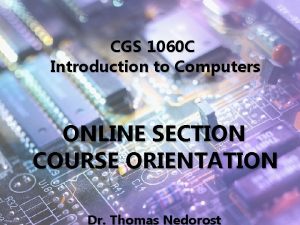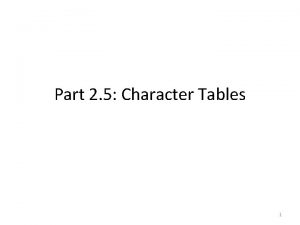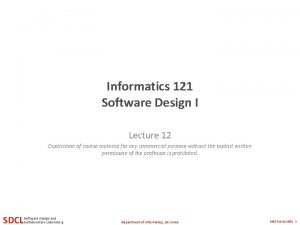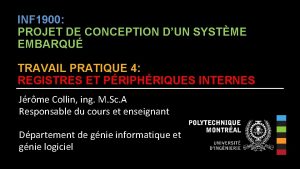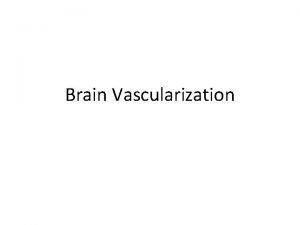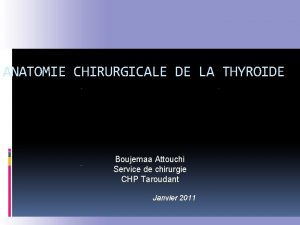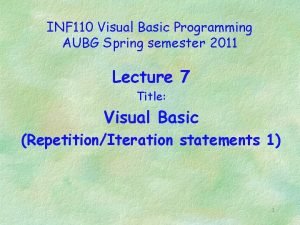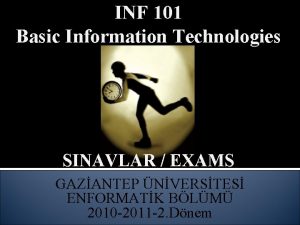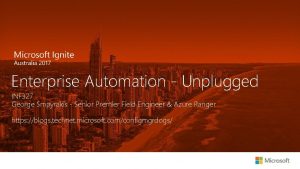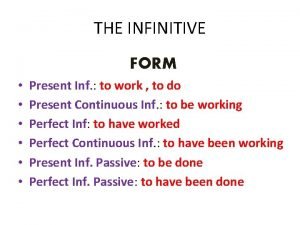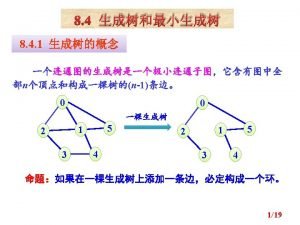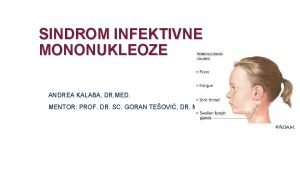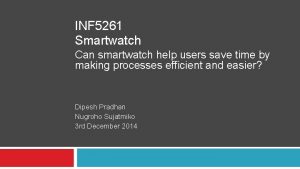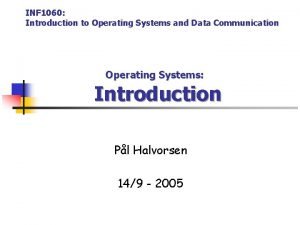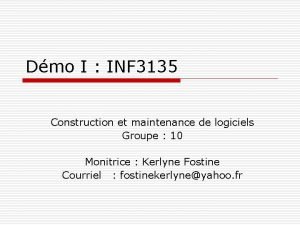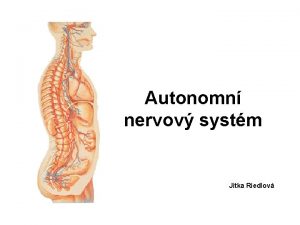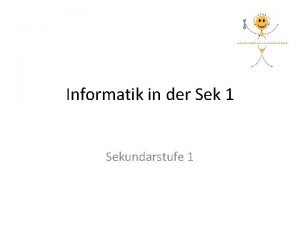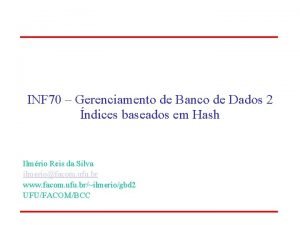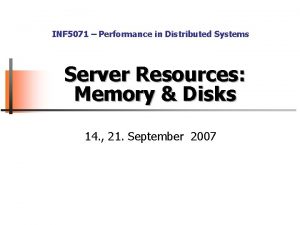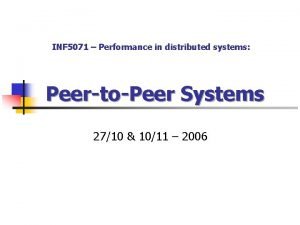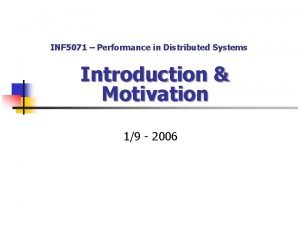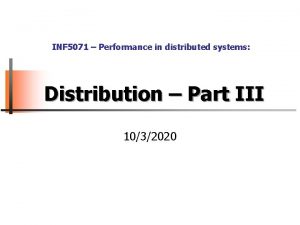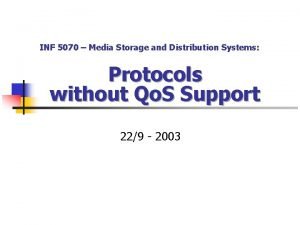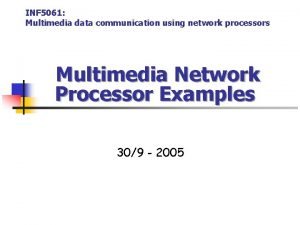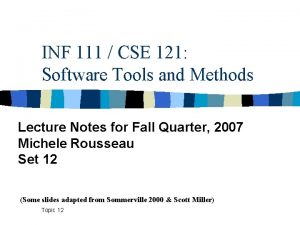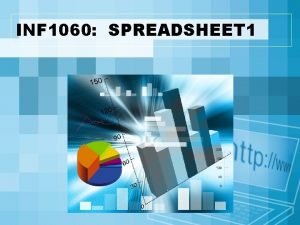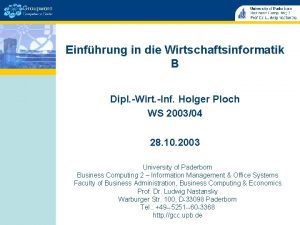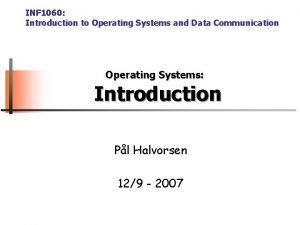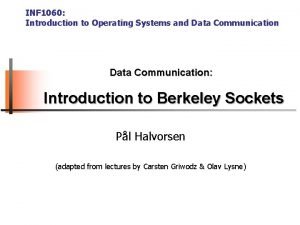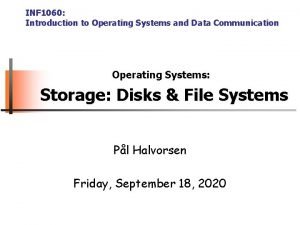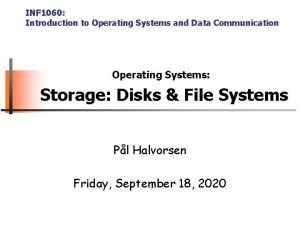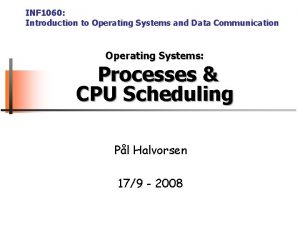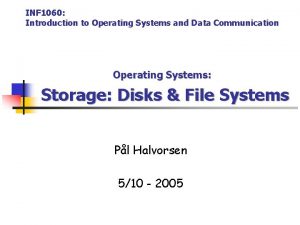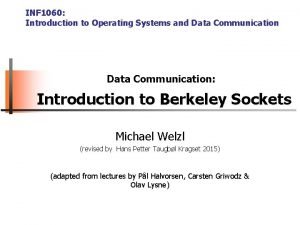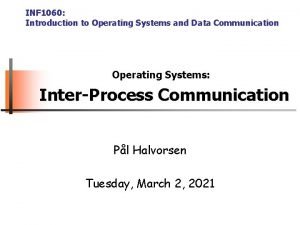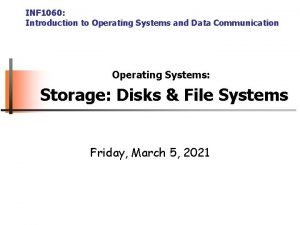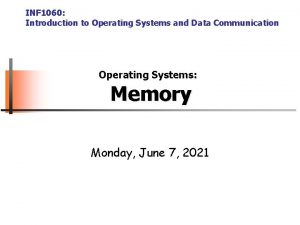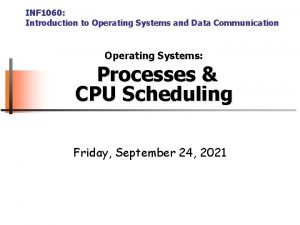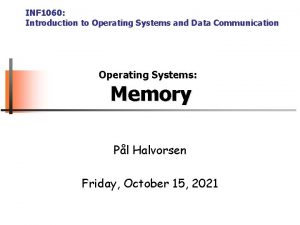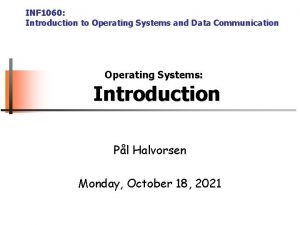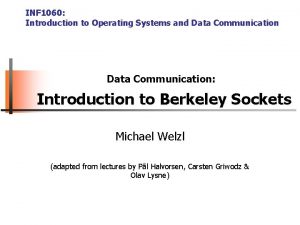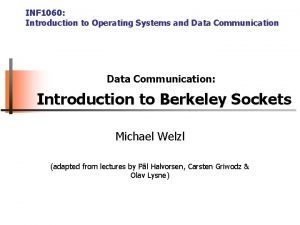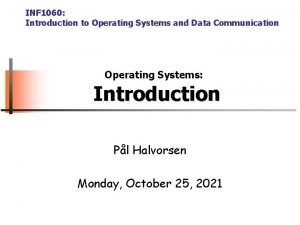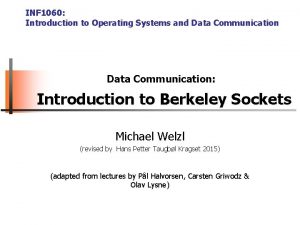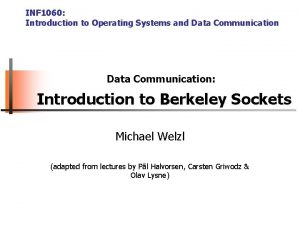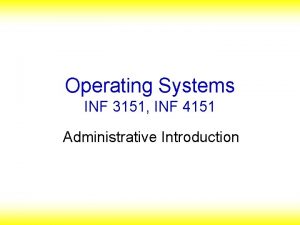INF 1060 Introduction to Operating Systems and Data







































- Slides: 39

INF 1060: Introduction to Operating Systems and Data Communication Operating Systems: Introduction Pål Halvorsen Wednesday, November 4, 2020

Overview § Basic execution environment – an Intel example (why do you need an operating system (OS), or need to know anything about it) § What is an OS? § OS components and services (extended in later lectures) § Interrupts and system calls § Booting, protection, kernel organization University of Oslo INF 1060, Pål Halvorsen

Hardware § Central Processing Units (CPUs) § Memory (cache(s), RAM, ROM, Flash, …) § I/O Devices (network cards, disks, CD, keyboard, mouse, …) § Links (interconnects, busses, …) University of Oslo INF 1060, Pål Halvorsen

An easy, old example: Intel Hub Architecture Intel D 850 MD Motherboard: Source: Intel® Desktop Board D 850 MD/D 850 MV Technical Product Specification i 7 motherboard Video mouse, keyboard, parallel, serial, network and USB connectors PCI Connectors (slots) Memory Controller Hub sy st em bu s AGP slot I/O Controller Hub PCI bus b ce hu rfa te in RDRAM interface Pentium 4 socket RAMBUS RDRAM – 2 banks (4 slots) Firmware Hub – including BIOS Power connector Speaker Battery University of Oslo Diskette connector IDE drive connectors INF 1060, Pål Halvorsen

An easy, old example: Intel Hub Architecture application Pentium 4 Processor file system registers cache(s) disk system bus (64 -bit, 400/533 MHz ~24 -32 Gbps) RDRAM memory controller hub RAM interface (two 64 -bit, 200 MHz ~24 Gbps) RDRAM hub interface (four 8 -bit, 66 MHz 2 Gbps) I/O controller hub University of Oslo PCI slots PCI bus PCI slots (32 -bit, 33 MHz 1 Gbps) PCI slots INF 1060, Pål Halvorsen disk

A slightly newer example: Intel Platform Controller Hub Architecture Sandy Bridge, Core i 7 registers cache(s) integrated memory controller Pentium 4 Processor i. Graphics PCIe registers cache(s) Flexible Display Interface (FDI) Direct Media Interface (DMI) / Quick. Path Interconnect (QPI) RDRAM memory controller hub PCH Platform Controller Hub I/O controller hub University of Oslo Peripherals RDRAM PCI slots PCIe slots INF 1060, Pål Halvorsen

Example: IBM POWER 4 chip CPU L 1 core interface switch POWER 4 chip CPU L 1 core interface switch L 2 core interface fabric controller switch GX controller L 2 CPU L 1 L 3 controller L 3 fabric controller memory controller RAM GX controller L 3 memory controller RAM RAM fabric controller (chip-chip fabric + multi-chip module) GX CPU controller L 1 POWER 4 chip L 3 controller CPU L 1 memory CPU controller L 1 RAM POWER 4 chip CPU L 1 core interface switch L 2 fabric controller GX controller L 3 memory controller RAM GX controller Multichip modules in fabric controller can connect 4 chips into a 4 chip, 2 -way SMP 8 -way MP INF 1060, Pål Halvorsen RAM L 3 controller RAM University of Oslo RAM L 3 memory controller RAM RAM

Example: IBM POWER 4 chip CPU L 1 core interface switch CPU L 1 L 2 CPU L 1 core interface switch CPU L 1 L 2 POWER 4 chip CPU L 1 L 2 CPU L 1 POWER 4 chip fabric controller GX controller L 3 memory controller RAM GX controller L 2 RAM L 3 controller L 3 RAM memory controller GX controller RAM L 3 RAM POWER 4 chip GX controller CPU L 1 L 3 controller CPU L 1 core interface switch L 2 fabric controller GX controller RAM L 3 memory controller RAM GX controller RAM L 3 RAM memory controller CPU L 1 core interface switch CPU L 1 L 2 CPU L 1 L 3 controller memory controller RAM L 3 L 2 RAM GX controller L 3 RAM GX controller RAM L 3 controller L 3 memory controller L 3 controller RAM RAM CPU L 1 L 2 POWER 4 chip L 3 fabric controller core interface switch RAM memory RAM controller L 2 RAM memory controller L 3 GX controller L 3 memory controller RAM RAM L 3 controller RAM POWER 4 chip CPU L 1 RAM POWER 4 chip GX controller L 3 controller CPU L 1 L 3 CPU L 1 core interface switch L 2 memory controller RAM RAM fabric controller RAM core interface switch fabric controller memory controller RAM memory controller POWER 4 chip CPU L 1 L 2 CPU L 3 L 1 controller core interface switch memory controller RAM fabric controller core interface switch fabric controller GX controller RAM CPU L 1 RAM core interface switch POWER 4 chip GX controller CPU L 1 memory controller CPU L 1 fabric controller POWER 4 chip RAM fabric controller L 3 controller POWER 4 chip L 3 CPU L 1 L 2 CPU L 1 core interface switch CPU L 2 L 1 L 3 controller L 3 CPU L 1 RAM CPU L 1 GX controller L 2 RAM CPU L 1 L 3 controller L 2 fabric controller L 3 memory controller POWER 4 chip GX controller core interface switch GX controller L 3 RAM core interface switch POWER 4 chip fabric controller L 3 controller RAM core interface switch GX controller POWER 4 chip CPU L 1 GX controller RAM POWER 4 chip CPU L 1 RAM POWER 4 chip RAM fabric controller L 3 controller RAM CPU L 1 memory controller L 3 fabric controller L 3 controller memory controller L 2 fabric controller RAM POWER 4 chip fabric controller core interface switch L 3 controller fabric controller CPU L 1 L 2 POWER 4 chip fabric controller core interface switch L 3 controller CPU L 1 core interface switch L 3 memory controller RAM RAM GX controller L 3 controller fabric controller L 3 memory controller RAM RAM GX controller L 3 memory controller RAM RAM Chip-chip fabric in fabric controller can connect 4 multi-chips into a 4 x 4 chip, 2 -way SMP 32 -way MP University of Oslo INF 1060, Pål Halvorsen

Other examples: AMD Opteron & Intel Xeon MP Processor-based 4 P F Different hardware may have different bottlenecks ==> nice to have an operating system to control the HW? University of Oslo INF 1060, Pål Halvorsen

Different Hardware University of Oslo Application program Operating System Application Operating System Hardware X Hardware Y INF 1060, Pål Halvorsen

Intel 32 -bit Architecture (IA 32): Basic Execution Environment it b 4 …. s v ? and s r so e. s r e a c ro rdw cond p 2 a t 3 h i -b f the se s. 2 r v 3 e t p. s bi een idth o ssed k w s t 6 1 /w be ce lete ta e o e z r i c p s p a e en t r m h a t e o f d c f s g di cessor unt of ey can rities… i b A ila ro mo ich th p m a i t i s e s! n o 64 -b fects th at wh a lot of i at n d f a , e l a e e xp e This the sp therwis r e asi – O e r fo t i b 23 g sin u … . 6 s v -bit University of Oslo INF 1060, Pål Halvorsen

Intel 32 -bit Architecture (IA 32): Basic Execution Environment § Address space: 1 – 236 (64 GB), each process may have a linear address space of 4 GB (232) § Basic program execution registers: − − 8 6 1 1 general purpose registers (data: EAX, EBX, ECX, EDX, address: ESI, EDI, EBP, ESP) segment registers (CS, DS, SS, ES, FS and GS) GPRs: flag register (EFLAGS) EAX: X PUSH %eax instruction pointer register (EIP) Y EBX: PUSH %ebx § Stack – a continuous array of memory locations − − − Current stack is referenced by the SS register ESP register – stack pointer EBP register – stack frame base pointer (fixed reference) PUSH – stack grows, add item (ESP decrement) POP – remove item, stack shrinks (ESP increment) <do something> POP %ebx POP %eax STACK: § Several other registers like Control, MMX/FPU (MM/R), Memory Type Range Registers (MTRRs), SSEx (XMM), AVX (YMM), performance monitoring, … oi Pp ES University of Oslo INF 1060, Pål Halvorsen ECX: EDX: ESI: EDI: EBP: ESP: see arrow r: nte 0 x 0. . . Y X. . . 0 xfff. . .

C Function Calls & Stack § A calling function (main) does − push the parameters into stack in reverse order − push return address (current EIP value) onto stack int add (int a, int b) { return a + b; } main (void) { int c = 0; c = add(4 , 2); } § When called, a C function (add) does − push frame pointer (EBP) into stack - saves frame pointer register and gives easy return if necessary − let frame pointer point at the stack top, i. e. , point at the saved stack pointer (EBP = ESP) − shift stack pointer (ESP) upward (to lower addresses) to allocate space for local variables § When returning, a C function (add) does − − put return value in the return value register (EAX) copy frame pointer into stack pointer - stack top now contains the saved frame pointer pop stack into frame pointer (restore), leaving the return program pointer on top of the stack the RET instruction pops the stack top into the program counter register (EIP), causing the CPU to execute from the "return address" saved earlier § When returned to calling function, it (main) does − copy the return value (EAX) into right place − pop parameters – restore the stack University of Oslo INF 1060, Pål Halvorsen

C Function Calls & Stack § Example: int add (int a, int b) { return a + b; objdu mp -d } code segment: … 8048314 <add>: 8048314: push %ebp 8048315: mov %esp, %ebp 8048317: mov 0 xc(%ebp), %eax main (void) 804831 a: add 1. Pop return instruction pointer { 804831 d: pop into the EIP register if this e 804831 e: ret int c = 0; c i n e b t i 2. Release parameters (ESP) t ' n d l Wouexecution utomati 804831 f cally <main>: c =3. add(4 , 2); caller Resume a } could be d!!? ? 804831 f: push stack: %esp, %ebp sub $0 x 18, %esp 8048325: and $0 xfffffff 0, %esp 8048328: mov $0 x 0, %eax insert value 0 in variable a on stack: 0 xfffffffc = -(0 xffff – 0 xfffffffc) = -0 x 4 804832 d: sub %eax, %esp 804832 f: movl $0 x 0, 0 xfffffffc(%ebp) c’s memory address = EBP - 4 8048336: movl $0 x 2, 0 x 4(%esp) 804833 e: movl $0 x 4, (%esp) 8048345: call 8048314 <add> 804834 a: mov %eax, 0 xfffffffc(%ebp) 804834 d: leave 804834 e: ret 804834 f: nop 1. 2. 3. 6 0 old EBP. . . University of Oslo %ebp mov “main” EBP 2 %ebp manage y 8048320: s stem g n i t a r 8048322: ope 0 x 0. . . 804834 a 4 0 x 8(%ebp), %eax Push EIP register Loads the offset of the called procedure in the EIP register Begin execution EAX: ? ? 2 0 6 0 xfff. . . INF 1060, Pål Halvorsen . . .

Many Concurrent Tasks § Better use & utilization − many concurrent processes • performing different tasks • using different parts of the machine − many concurrent users § Challenges − − “concurrent” access protection/security fairness … University of Oslo Operating System Layer INF 1060, Pål Halvorsen

What is an Operating System (OS)? § “An operating system (OS) is a collection of programs that acts as an intermediary between the hardware and its user(s), providing a high-level interface to low level hardware resources, such as the CPU, memory, and I/O devices. The operating system provides various facilities and services that make the use of the hardware convenient, efficient and safe” Lazowska, E. D. : Contemporary Issues in Operating Systems , in: Encyclopedia of Computer Science, Ralston, A. , Reilly, E. D. (Editors), IEEE Press, 1993, pp. 980 § It is an extended machine (top-down view) − Hides the messy details − Presents a virtual machine, easier to use § It is a resource manager (bottom-up view) − Each program gets time/space on the resource University of Oslo INF 1060, Pål Halvorsen user application operating system hardware

Where do we find OSes? Computers Phones cameras, other vehicles/crafts, set-top boxes, watches, sensors, … EVERYWHERE Cars University of Oslo Game Boxes INF 1060, Pål Halvorsen

Operating System Categories § Single-user, single-task: historic, and rare (only a few PDAs use this) § Single-user, multi-tasking: PCs and workstations may be configured like this (typically, phones today) § Multi-user, multi-tasking: used on large, old mainframes; and handhelds, PCs, workstations and servers today § Distributed OSes: support for administration of distributed resources § Real-time OSes: support for systems with real-time requirements like cars, nuclear reactors, etc. § Embedded OSes: built into a device to control a specific type of equipment like cellular phones, micro waves, washing machines, etc. University of Oslo INF 1060, Pål Halvorsen

So, why study OSes? § “I will never write an operating system from scratch, nor even touch a line of code in the kernel” § “Operating systems have existed for decades, what more can be added? ” § “I just need to know the API to give the system commands in order to store my data and run my programs” § “Writing programs in Java is very easy, and I do not need to know anything about operating systems to make it work” § Consider the following example, does it matter which one to use? : int data[15000]; for (j = 0; j < 15000; j++) for (i = 0; i < 15000; i++) data[i][j] = i*j; int data[15000]; for (j = 0; j < 15000; j++) for (i = 0; i < 15000; i++) data[j][i] = i*j; on my mac: datasize University of Oslo 3. 9 s 15. 000 1. 2 s 12. 2 s 25. 000 3. 5 s 22. 1 s 30. 000 4. 7 s 49. 3 s 40. 000 10. 1 s INF 1060, Pål Halvorsen

So, why study OSes? Failing to meet the Technical Challenges… … results in low quality pictures, video artifacts, hiccups, etc. … giving annoyed users! University of Oslo INF 1060, Pål Halvorsen

So, why study OSes? Failing to meet the Technical Challenges… … influence the game experience … giving annoyed users – latency can kill! University of Oslo INF 1060, Pål Halvorsen

So, why study OSes? Failing to meet the Technical Challenges… … influence the your everyday life – latency can literally kill! University of Oslo INF 1060, Pål Halvorsen

So, why study OSes? § To do things right and efficient, one must know how computers and operating systems work (and networks) − operating systems provide magic to provide “infinite” CPU cycles, “endless” memory, transparent access to devices, networked computing, etc. − operating systems manage concurrency and sharing − understand the tradeoffs between performance and functionality, division of labor between HW and SW § OSes are found everywhere and are therefore key components in many systems University of Oslo INF 1060, Pål Halvorsen

Primary Components File Management (file system): Application program layer provides a mechanism for the user to create, delete, modify and manipulate files User Interface: Operating system layer Device Management: provides a mechanism for user and User interface application to communicate with OS (shell) and use the machine resources Processor Management of processes: (or process) provides a mechanism for management the system to efficiently and fair manage the machine CPU cycles for the running processes File management Memory management provides the system with means to Device control the systems peripheral devices management like keyboard, display, printer and disk Communication: servicesa mechanism for the system provides communicate with other processes (on same or another machine) Hardware layer Memory Management: provides a mechanism for the system to efficiently manage the system’s memory recourses – allocating space to processes University of Oslo INF 1060, Pål Halvorsen

Device Management § The OS must be able to control pheripal devices such as disks, keyboard, network cards, screen, speakers, mouse, memory sticks, camera, DVD, michrophone, printers, joysticks, . . . − large diversity − varying speeds − different access modes Device controller Device driver Device controller. . . Device driver. . . Device controller Device driver Device University of Oslo INF 1060, Pål Halvorsen Rest of the operating system

Device Management § Device controllers often have registers to hold status, give commands, … − port I/O – special instructions to talk to device memory − memory mapped I/O – registers mapped into regular memory § Each device may be different and require device-spesific software Device and giving Device § The software talking to the controller commands is called a device driver Device controller − usually running within the kernel Device − usually provided by the device vendors controller § driver Device driver − translating device-independent commands, e. g. , . . . number device read from file on disk: logical block interface Device driver A huge amount of code (95%controller of the Linux code!!? ? ) Device University of Oslo INF 1060, Pål Halvorsen Rest of the operating system (device, cylinder, head, sector)

UNIX Interfaces Applications are accessed HW through the API consisting of a set of routines, protocols and other tools (e. g. , POSIX – portable OS interface for UNIX) A user can interact with the system through the application interface or using a command line prosessed by a shell (not really a part of the OS) A plain command line interface may be hard to use. Many UNIX systems therefore have a standard graphical interface (X Windows) which can run a desktop system (like KDE, Gnome, Fvwm, Afterstep, …) Windows is more or less similar… University of Oslo INF 1060, Pål Halvorsen

System Calls § The interface between the OS and users is defined by a set of system calls § Making a system call is similar to a procedure/function call, but system calls enter the kernel: application system call interface 7 242. S 34 ry. S able_32 3 : t x n u e n i L 4. 19 syscall_t tbl 35. 2 v c 4 x 86 32. r _ l l 0. a user space x 86 v 3 sysc 2. 6 1 3. kernel space x 86 v 531 SD: B e e c Fr calls. s y s v 9 OS components University of Oslo INF 1060, Pål Halvorsen

System Calls: read § C example: count = read(fd, buffer, nbyte) 1. push parameters on stack 2. call library code register put system call number in register memory (stack) 3. 4. count = read (fd , buffer , nbytes) increase instruction pointer remove parameters from stack kernel space system call handler X resume process sys_read() INF 1060, Pål Halvorsen buffer user space kernel examines system call number finds requested system call handler execute requested operation University of Oslo application nbytes buffer fd return to library and clean up ü ü 6. X (read) call kernel (TRAP) ü ü ü 5. read library procedure

Interrupt Program Execution CPU g llin ” s u y po “ e a m We University of Oslo INF 1060, Pål Halvorsen ? ! …

Interrupts § Interrupts are electronic signals that (usually) result in a forced transfer of control to an interrupt handling routine − alternative to polling − caused by asynchronous events like finished disk operations, incoming network packets, expired timers, … − an interrupt descriptor table (IDT) associates each interrupt with a code descriptor (pointer to code segment) − can be disabled or masked out University of Oslo INF 1060, Pål Halvorsen

Exceptions § Another way for the processor to interrupt program execution is exceptions − caused by synchronous events generated when the processor detects a predefined condition while executing an instruction − TRAPS: the processor reaches a condition the exception handler can handle (e. g. , overflow, break point in code like making a system call, …) − FAULTS: the processor reaches a fault the exception handler can correct (e. g. , division by zero, wrong data format, …) − ABORTS: terminate the process due to an unrecoverable error (e. g. , hardware failure) which the process itself cannot correct − the processor responds to exceptions (i. e. , traps and faults) essentially as for interrupts University of Oslo INF 1060, Pål Halvorsen

Interrupt (and Exception) Handling § The IA-32 has an interrupt description table (IDT) with 256 entries for interrupts and exceptions − − § 32 (0 - 31) predefined and reserved 224 (32 - 255) is "user" (operating system) defined Each interrupt is associated with a code segment through the IDT and a unique index value giving management like this: 1. process running while interrupt occur 2. capture state, switch control and find right interrupt handler 3. user kernel execute the interrupt handler interrupt (x=DISK) 4. restore interrupted process 5. continue execution University of Oslo INF 1060, Pål Halvorsen IDT: Interrupt routines:

Booting § Memory is a volatile, limited resource: OS usually on disk § Most motherboards contain a basic input/output system (BIOS) chip (often flash RAM) – stores instructions for basic HW initialization and management, and initiates the … §. . . bootstrap: loads the OS into memory − read the boot program from a known location on secondary storage typically first sector(s), often called master boot record (MBR) − run boot program • read root file system and locate file with OS kernel • load kernel into memory • run kernel University of Oslo INF 1060, Pål Halvorsen

Booting 1. 2. 3. 4. 5. Gather HW information and set up system Load data from boot sector Execute boot program an CPU Load OS from disk Run OS boot OS University of Oslo INF 1060, Pål Halvorsen

User Level vs. Kernel Level (Protection) § Many OSes distinguish user and kernel level, i. e. , due to security and protection § Usually, applications and many sub-systems run in user mode (level 3) − protected mode − not allowed to access HW or device drivers directly, only through an API − access to assigned memory only − limited instruction set § OSes run in kernel mode (under the virtual machine abstraction, level 0) − − real mode access to the entire memory all instructions can be executed bypass security University of Oslo INF 1060, Pål Halvorsen

OS Organization § No standard describing how to organize a kernel (as it is for compilers, communication protocols, etc. ) and several approaches exist, e. g. : § Monolithic kernels (“the big mess”): − − written as a collection of functions linked into a single object usually efficient (no boundaries to cross) large, complex, easy to crash UNIX, Linux, Windows 7+… § Micro kernels − kernel with minimal functionality (managing interrupts, memory, processor) − other services are implemented in server processes running in user space used in a client-server model − lot of message passing (inefficient) − small, modular, extensible, portable, … − MACH, L 4, Chorus, Windows NT, … University of Oslo INF 1060, Pål Halvorsen

Virtualization § People would like to save money, save energy, reduce the number of machines, be secure, easily move services, etc. … and still run multiple OSes, applications, etc… § Virtualization − many types of virtualization – server/machine virtualization − partitioning a physical server into several virtual servers, or machines − interact independently/isolated with other devices, applications, data and users App App App Guest OS Guest OS App Hypervisor App scfss App Hypervisor Host OS Hardware Type 1 Hypervisor VMWare ESX, XEN, Hyper-V Type 2 Hypervisor KVM, Virtual. Box, VMWare Workstation University of Oslo § Sandboxing INF 1060, Pål Halvorsen Sandboxing Host OS Hardware Sandboxing sandboxie, bufferzone, libcontainer, runc, cgroups

Summary § OSes are found “everywhere” and provide virtual machines and work as a resource managers § Many components provide different services § Users access the services using an interface like system calls § In the next lectures, we look closer at some of the main components and abstractions in an OS − − processes management memory management storage management local inter-process communication − inter-computer network communication is covered in the last part of the course University of Oslo INF 1060, Pål Halvorsen
 Thomas nedorost ucf
Thomas nedorost ucf Group 2 questions chemsheets answers
Group 2 questions chemsheets answers England in 1060
England in 1060 Dual mode in os
Dual mode in os Verb infinitive without to
Verb infinitive without to Mulliken symbol for irreducible representations
Mulliken symbol for irreducible representations Inf 121 uci
Inf 121 uci Inf1900
Inf1900 Mag inf
Mag inf What does the posterior inferior cerebellar artery supply
What does the posterior inferior cerebellar artery supply Artere thyroidienne inf
Artere thyroidienne inf Ma da inf harjutused
Ma da inf harjutused Inf 110
Inf 110 Inf 101
Inf 101 Inf 327
Inf 327 Inf
Inf Infinitive form
Infinitive form Define prim
Define prim Cyclopeptide mushroom
Cyclopeptide mushroom Astd inf meta
Astd inf meta Crp kod mononukleoze
Crp kod mononukleoze Inf smartwatch
Inf smartwatch Inf
Inf I inf
I inf Inf hartsol
Inf hartsol Edinger westphal nucleus
Edinger westphal nucleus Medencebemenet
Medencebemenet Inf
Inf Inf-schule lösungen scratch
Inf-schule lösungen scratch Bare infinitive
Bare infinitive Nextbusca
Nextbusca Inf
Inf Hash160 to address
Hash160 to address Inf
Inf Inf
Inf Inf
Inf Inf
Inf Inf 111
Inf 111 Inf1060
Inf1060 Dipl wirt inf
Dipl wirt inf
